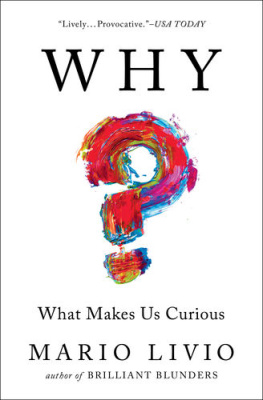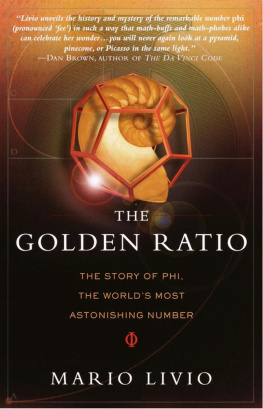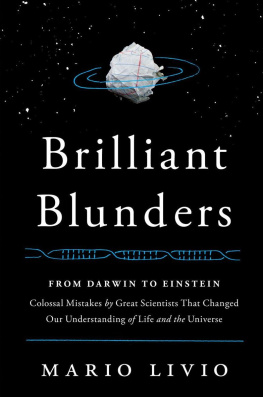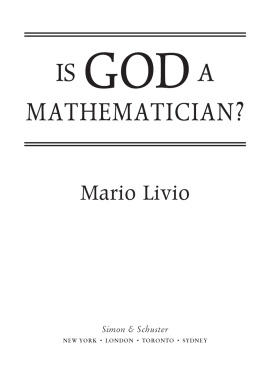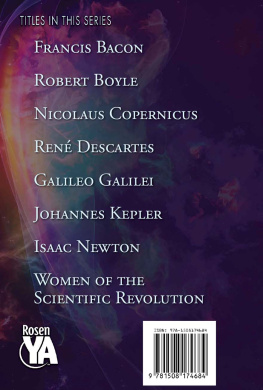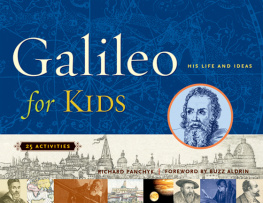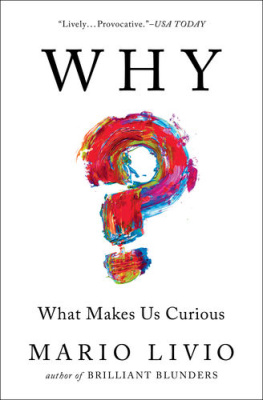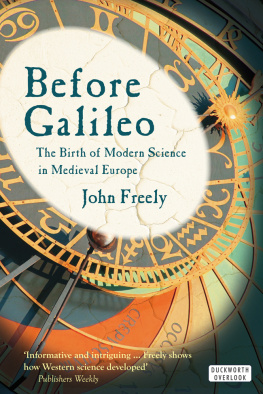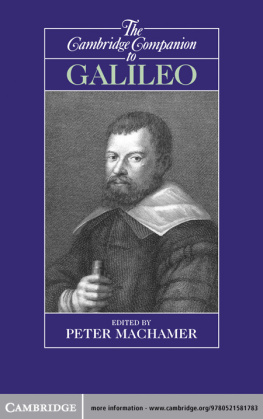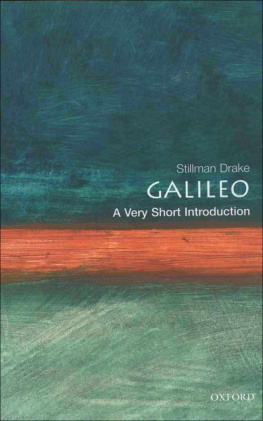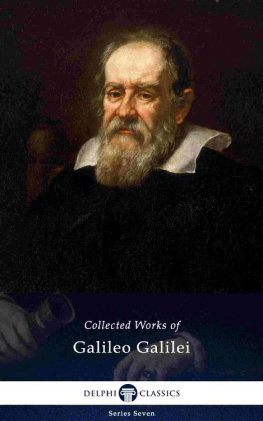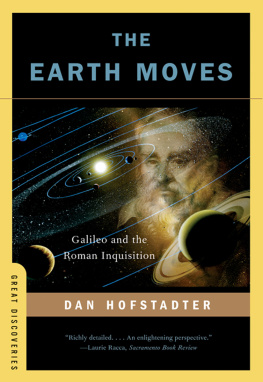Contents
Guide
Praise for Galileo
One would have hoped that the Galileo story could be treated just as the fascinating history this book makes clear it isbut we really need this story now, because were living through the next chapter of science denial, with stakes that couldnt be higher.
Bill McKibben, author of Falter: Has the Human Game Begun to Play Itself Out?
It is fashionable to invoke Galileo on both sides of any debate to claim the mantle of truth. In Galileo and the Science Deniers, Livio teaches us the method by which Galileo found the truth, using a process more powerful than rhetoric: examination. Today more than ever we need to understand what made Galileo synonymous with finding the truth.
Adam Riess, Nobel Laureate in Physics
To better understand the perilous threat of science denialism today, Mario Livio looks back at the scientist who faced the greatest denial of them all: that the Earth revolves around the Sun. By offering us an astrophysicists unique perspective on Galileos life and fate, this engaging work is a must-read for anyone who values the contributions of science to society.
Marcia Bartusiak, author of The Day We Found the Universe and Dispatches from Planet 3
Scientists have typically been fascinated and inspired by Galileos scientific achievements and by his struggle with the Catholic Church. In this book, astrophysicist Livio does an excellent job of conveying such fascination and inspiration in a manner that can be appreciated by scientists and nonscientists alike. An important lesson he emphasizes is Galileos bridging of the gap between the two cultures, namely the sciences and the humanities.
Maurice A. Finocchiaro, author of On Trial for Reason: Science, Religion, and Culture in the Galileo Affair
Livio illuminates the parallels between the deniers of Galileos scientific findings and those today who ignore the evidence of climate change. Intriguing and accessible, and packed with clever insights, Livios latest gives readers plenty of think about.
Publishers Weekly
This is an insightful, riveting, and deeply researched biography of Galileo Galilei that reveals not just his complex character but also how he was truly intellectually radical and well ahead of his time.
Priyamvada Natarajan, Professor, Departments of Astronomy and Physics, Yale University, and author of Mapping the Heavens: The Radical Scientific Ideas That Reveal the Cosmos
ALSO BY MARIO LIVIO
Why?: What Makes Us Curious
Brilliant Blunders: From Darwin to EinsteinColossal Mistakes by Great Scientists That Changed Our Understanding of Life and the Universe
Is God a Mathematician?
The Equation That Couldnt Be Solved: How Mathematical Genius Discovered the Language of Symmetry
The Golden Ratio: The Story of Phi, the Worlds Most Astonishing Number
The Accelerating Universe: Infinite Expansion, the Cosmological Constant, and the Beauty of the Cosmos

Simon & Schuster
1230 Avenue of the Americas
New York, NY 10020
www.SimonandSchuster.com
Copyright 2020 by Mario Livio
All rights reserved, including the right to reproduce this book or portions thereof in any form whatsoever. For information, address Simon & Schuster Subsidiary Rights Department, 1230 Avenue of the Americas, New York, NY 10020.
First Simon & Schuster hardcover edition May 2020
SIMON & SCHUSTER and colophon are registered trademarks of Simon & Schuster, Inc.
For information about special discounts for bulk purchases, please contact Simon & Schuster Special Sales at 1-866-506-1949 or .
The Simon & Schuster Speakers Bureau can bring authors to your live event. For more information or to book an event, contact the Simon & Schuster Speakers Bureau at 1-866-248-3049 or visit our website at www.simonspeakers.com.
Text design by Paul Dippolito
Jacket design by Jason Heuer
Jacket image by World History Archive / Alamy Stock;
Image of Galileo: D. Passignano, Portrait of Galileo Galilei, Firenze, Collezione Alberto Bruschi
Library of Congress Cataloging-in-Publication Data
Names: Livio, Mario, 1945 author.
Title: Galileo and the denialists / Mario Livio.
Description: First Simon & Schuster hardcover edition. | New York : Simon & Schuster, 2020. | Includes bibliographical references and index.
Identifiers: LCCN 2019032142 | ISBN 9781501194733 (hardcover) | ISBN 9781501194788 (ebook)
Subjects: LCSH: Galilei, Galileo, 15641642. | AstronomersItalyBiography. | ScientistsItalyBiography. | Religion and science. | Faith and reason-Christianity.
Classification: LCC QB36.G2 L658 2020 | DDC 520.92 [B]dc23
LC record available at https://lccn.loc.gov/2019032142
ISBN 978-1-5011-9473-3
ISBN 978-1-5011-9478-8 (ebook)
To Sofie
Preface
Being an astrophysicist myself, I have always been fascinated by Galileo. He was, after all, not only the founder of modern astronomy and astrophysicsthe person who turned an ancient profession into a window onto the universes deepest secrets and awe-inspiring wondersbut also a symbol of the fight for intellectual freedom.
Using a simple arrangement of lenses fixed at the two ends of a hollow cylinder, Galileo was able to revolutionize our understanding of the cosmos and of our place within it. Fast-forward four centuries, and we find a great-great-great-grandson of Galileos telescope: the Hubble Space Telescope.
Over the decades during which I worked as a scientist with Hubble (till 2015), I was often asked what I thought gave the Hubble telescope its iconic status as one of the most recognizable projects in scientific history. Ive identified at least six main reasons for Hubbles popularity. In no particular order, these are:
- The incredible images produced by the space telescope, dubbed by one journalist the Sistine Chapel of the scientific age.
- The actual scientific discoveries to which Hubble has significantly contributed. Those range from determining the composition of the atmospheres of extrasolar planets to the astounding discovery that the cosmic expansion is accelerating.
- The drama associated with the telescope. The transformation of what was initially considered a disastrous failurea flaw in the telescopes mirror was discovered within weeks after its launchinto a gigantic success.
- The ingenuity of scientists and engineers, coupled with the courage of astronauts, all of which helped to overcome the incredible technological challenges involved in making repairs and upgrades several hundred miles above the Earth.
- The telescopes longevity: it was launched in 1990 and is still working beautifully in 2019.
- An extraordinarily effective dissemination and outreach program, which circulates the findings to scientists, to the general public, and to educators, in an efficient, attractive, and easily accessible fashion.
Amazingly, when I carefully examined Galileos life and work, I realized that the same key words came to mind: images, discoveries, drama, ingenuity, courage, longevity, and dissemination.
First, Galileo created breathtaking images from his observations of the lunar surface. Second, while his spectacular discoveries about the solar system and the Milky Way didnt conclusively prove that the world was Copernican, with the Earth revolving around the Sun, they all but destroyed the stability of the Earth-centered Ptolemaic universe.

